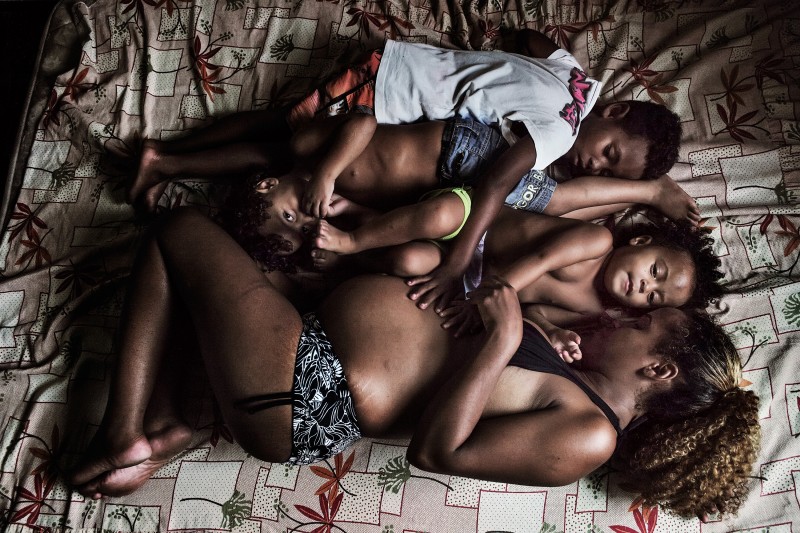A Vibrant Life Amid the Ruins of Rio

-
PhotographerPeter Bauza
-
PrizesGold in People/Family
The people of “Copacabana Palace†are the “sem tetos, sem terras†(homeless and landless). Generally hidden from view, they represent the dark side of Brazil’s multibillion-dollar spending spree on global sporting events, financial/political and corruption crisis. Despite government housing schemes „minha casa, minha vida“ (my home, mi life) and anti-poverty policies the “sem tetos†face a bleak future. This is not surprising as the UN reported that more than one billion people of the world’s residents live in inadequate housing, mostly in the sprawling slums and squatter settlements in developing countries. The Habitat Agenda, Paragraph 60 gives the precise explanation what it to be considered to be an adequate shelter and not only a roof over one’s head. The cost of doing nothing may be even bigger as the new urban slums are potential breeding places for social and political unrest. Brazil ratified the international UN treaties related to “Human Rights†on the 6th of July 1992, and incorporated them into the national legislation through Decree 591 (constitution of Brazil 1988 – artigo 5, 2. e. 3). The State is thereby obliged to protect and to provide an adequate housing. Pressure groups who fight for the homeless claim that there are more than 5 million empty rooms and apartments in Brazil. Squatters who occupy such abandoned spaces and try to make them livable often face police hostility or eviction. Over 300 families have found a kind of refuge here; a place that is ironically also called “Copacabana Palace†besides many other most known names, like „Jambalaya“ as per a TV show or „Carandiru“, the famous state prison in Sao Paulo. This is there life here in a series of condominiums that were built over 30 years ago but which, due to serious construction and financial problems, was never finished and has been occupied. Life here is hard: the basics — like fresh water on all floors, a working sewage system, and stable electricity — are missing and a lack of sanitation causes serious health problems. Many of the people living here come from communities known as favelas. They have escaped from confrontations with drug dealers; or they can no longer afford monthly rent increases; or they have simply been living on the streets with no protection. Even worse off are those who were given social housing in a government program. Due to the presence of drug gang families that often surrounded or occupied these housing complexes, they could never occupy their new home. But the people who live here are survivors. They usually subsist on monthly incomes between 80 and 250 USD, or live on the $15 to $100 they get from the government subsidy called the Family Basket. Most of them cannot count on regular employment and so become self-employed in the informal economy, as day laborers, or selling homemade food or soft drinks on the streets and highways. They all dream big… “a dream of an own stable homeâ€. In the last decade the government had proposed low interest housing programs that would provide housing relief under certain conditions. But there were miles of red tape and long waits; so getting such housing was often a matter of luck. Unfortunately promises, which are made during the election campaigns, are often never fulfilled. This is a story of people trying to balance themselves on the narrow precipice between surviving and thriving. It’s is about their sufferings, their weaknesses and strengths, their failures as well as their success in the everyday efforts to survive, and rise above, a hostile situation. But nobody speaks about them. In a few words, far enough from Rio de Janeiro to be simply ignored. This is their story, a story of their everyday life: their happiness, sadness, needs, illusions, communities, and their strengths. This is home life for millions of Brazilians.
Peter Bauza is a German photographer who works in the documentary and storytelling world, which took him to several countries where he also developed his visual language. He is very committed to social and geopolitical issues especially in the areas of conservation, global health, diminishing cultures, sustainability and the environment. He has resided in South America and Europe for more than 20 years and also frequently travels to Africa. His life-long respect for multicultural viewpoints fueled by a fluency in five languages also afforded him many opportunities. Peter’s work has been published and exhibited internationally.